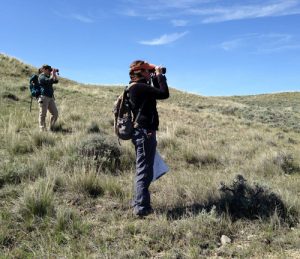UM Student Research Tests Ways to Reduce Errors in Wildlife Surveys
By Kasey Rahn, University of Montana
10/22/2019

Photo Credit: University of Montana
MISSOULA – Research led by a University of Montana undergraduate student to identify less error-prone methods for performing wildlife surveys was published Oct. 20 in Ecological Applications.
Biologists around the world use a variety of boots-on-the-ground field methods to survey animal populations. When extrapolated, these data provide population counts and other scientific information used to study and manage species. But counting wildlife is rarely straightforward. Birds, for instance, are small or sometimes hard to see, and many species look and sound similar.
A new study by University of Montana researchers published Oct. 20 in Ecological Applications aims to identify less error-prone methods for performing wildlife surveys, such as bird counts.A new study by University of Montana researchers published Oct. 20 in Ecological Applications aims to identify less error-prone methods for performing wildlife surveys, such as bird counts.“Many biologists assume that false positives – either misidentifications or double-counts of animals – don’t happen in their surveys. But research has shown that false positives happen quite a lot, and those false positives can have huge impacts on the reliability of population estimates that we calculate from those data,” said first author Kaitlyn Strickfaden, a researcher with UM’s Avian Science Center. “So we made bird call simulations in which we knew the true identity of every calling bird to test differences in false positive rates in a few survey scenarios.”
Read more here:
http://news.umt.edu/2019/10/102219laws.php
Read the original article in Ecological Applications.